In the realm of dog grooming, the expertise of veterinarian Courtney Campbell shines through as he imparts essential tips for bathing and brushing your furry companion.
With a wealth of knowledge and experience, Campbell offers invaluable guidance on maintaining your dog's hygiene and well-being.
Discover the vet-approved techniques that can elevate your grooming routine to new levels of care and effectiveness.
Stay tuned as we unravel the secrets to ensuring your dog's grooming regimen is not only beneficial but also a bonding experience between you and your beloved pet.
Key Takeaways
- Use gentle dog shampoo and proper tools for bathing and brushing.
- Pat dry and avoid vigorous rubbing to maintain coat health.
- Consider using a blow dryer on low heat for longer coats.
- Regular grooming promotes health, prevents matting, and strengthens the bond.
Importance of Proper Dog Grooming
Proper dog grooming plays a crucial role in maintaining the health and well-being of our canine companions. Regular grooming not only keeps a dog looking clean and tidy but also helps prevent various health issues. Brushing your dog's coat removes dirt, debris, and loose hair, preventing matting and tangling, which can lead to skin irritation and infections.
Trimming your dog's nails is essential to prevent overgrowth, which can cause discomfort and affect their gait. Cleaning your dog's ears regularly helps prevent infections and promotes good ear health. Additionally, bathing your dog with appropriate products helps to keep their skin and coat healthy, free from parasites, and smelling fresh.
Proper grooming is a fundamental aspect of responsible pet ownership, ensuring your dog stays happy and healthy.
Tools Needed for Dog Bathing
When preparing to bathe your dog, it is essential to have the appropriate tools on hand to ensure a thorough and effective grooming session. The necessary tools for dog bathing include:
- A gentle dog shampoo formulated specifically for pets.
- A large cup or detachable showerhead for rinsing.
- Towels for drying.
- A brush suitable for your dog's coat type to prevent matting and tangles.
- Cotton balls or pads to clean the ears.
- A non-slip mat to keep your dog secure in the bathtub.
Step-by-Step Dog Bathing Guide
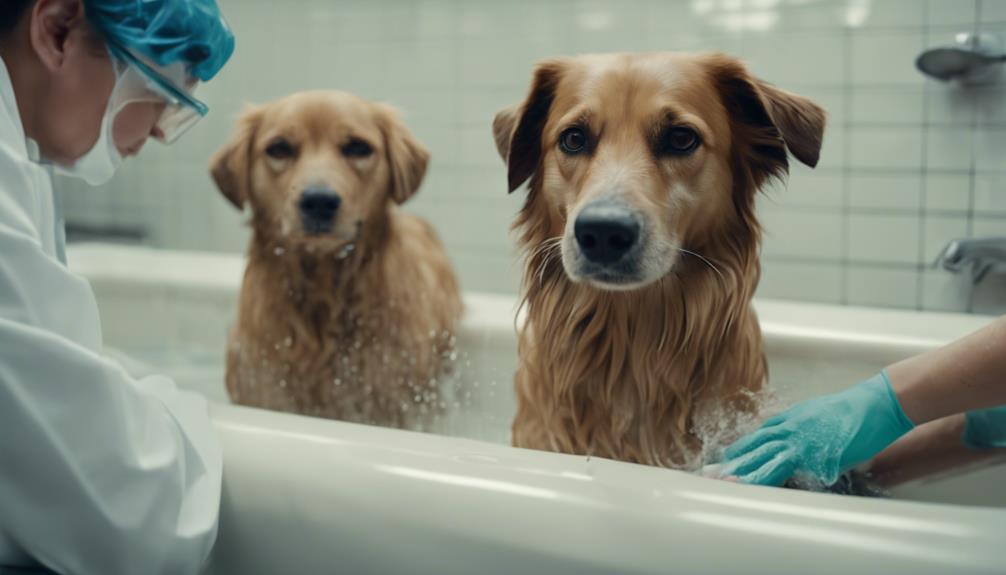
Before proceeding with the step-by-step dog bathing guide, ensuring you have gathered all the necessary tools for a successful grooming session is paramount. To make the process smoother and more effective, follow these steps:
- Prepare the Bathing Area: Choose a suitable bathing location with good lighting and a non-slip surface.
- Brush Your Dog: Remove any tangles or mats before the bath to prevent further tangling.
- Use Lukewarm Water: Ensure the water temperature is comfortable for your dog's sensitive skin.
| Step | Description | Importance |
|---|---|---|
| Prepare Bath Area | Create a safe environment | Minimizes stress |
| Brush Your Dog | Prevents matting | Promotes comfort |
| Use Lukewarm Water | Prevents skin irritation | Ensures safety |
Choosing the Right Dog Shampoo
Selecting the appropriate dog shampoo is essential to maintaining your pet's coat health and cleanliness. When choosing a dog shampoo, consider the following factors:
- Skin Type: Different shampoos are formulated for specific skin types, such as dry, sensitive, or oily skin. Choose a shampoo that matches your dog's skin needs.
- Fragrance: Opt for a shampoo with a mild and pleasant fragrance to keep your dog smelling fresh without overwhelming their sensitive sense of smell.
- Ingredients: Look for shampoos with natural ingredients like oatmeal, aloe vera, or coconut oil, which can help soothe skin and maintain a healthy coat.
- Veterinarian Approval: When in doubt, consult your veterinarian for recommendations on the best shampoo for your dog's specific needs.
Drying Techniques for Dogs
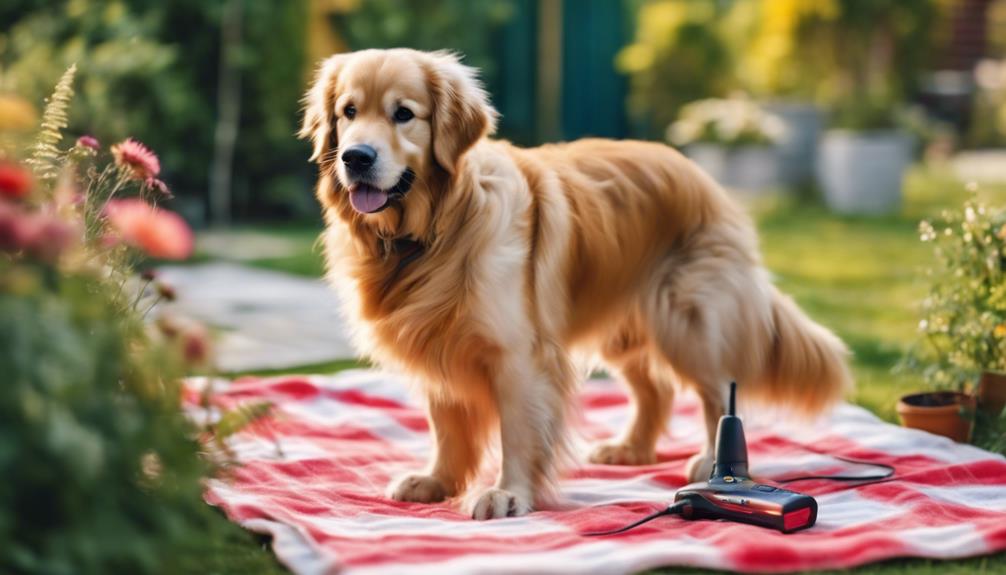
Properly drying your dog after bathing is essential to prevent skin issues and maintain a healthy coat. After bathing your dog, use a clean towel to gently pat them dry. Avoid vigorous rubbing, as this can cause tangles or matting in their fur.
For dogs with longer coats or those prone to skin irritations, consider using a blow dryer on a low heat setting. Keep the dryer at a safe distance from your dog to prevent overheating or discomfort. Ensure thorough drying, especially in areas where moisture tends to linger, such as under the ears or between skin folds.
Proper drying techniques not only keep your dog comfortable but also contribute to their overall well-being.
Benefits of Regular Dog Brushing
Regular dog brushing plays a crucial role in maintaining the health and appearance of your canine companion's coat. Here are four benefits of regular dog brushing:
- Distributes natural oils: Brushing helps to distribute the natural oils produced by your dog's skin, which keeps their coat healthy and shiny.
- Prevents matting: Regular brushing prevents mats and tangles from forming in your dog's fur, which can be uncomfortable and even painful for your pet.
- Stimulates blood flow: Brushing stimulates blood circulation to the skin, promoting overall skin health and a healthier coat.
- Bonding time: Brushing your dog regularly provides a great opportunity for bonding and strengthens the relationship between you and your furry friend.
Best Brushes for Different Coat Types

Maintaining your dog's coat health is further enhanced by selecting appropriate brushes tailored to different coat types. Choosing the right brush can help prevent matting, remove loose fur, and promote healthy skin and coat. Here is a table outlining some of the best brushes for different coat types:
| Coat Type | Best Brush | Description |
|---|---|---|
| Short | Bristle Brush | Ideal for removing dirt and debris from the coat |
| Long | Slicker Brush | Helps detangle and remove loose fur |
| Curly | Pin Brush | Prevents matting and maintains curls |
| Double | Undercoat Rake | Removes loose undercoat hair and reduces shedding |
| Wire | Firm Bristle Brush | Keeps wiry hair neat and tangle-free |
How Often to Brush Your Dog
Brushing your dog regularly is essential for maintaining a healthy coat and promoting overall well-being. To determine how often you should brush your furry companion, consider the following factors:
- Coat Type: Dogs with longer or thicker coats generally require more frequent brushing to prevent matting and tangles.
- Activity Level: Active dogs that spend a lot of time outdoors may need more frequent brushing to remove debris and prevent skin issues.
- Health Conditions: Dogs with skin conditions or allergies may benefit from more frequent brushing to remove irritants.
- Breed Specifics: Certain breeds may require daily brushing, while others can go longer between grooming sessions.
Techniques for Brushing Your Dog
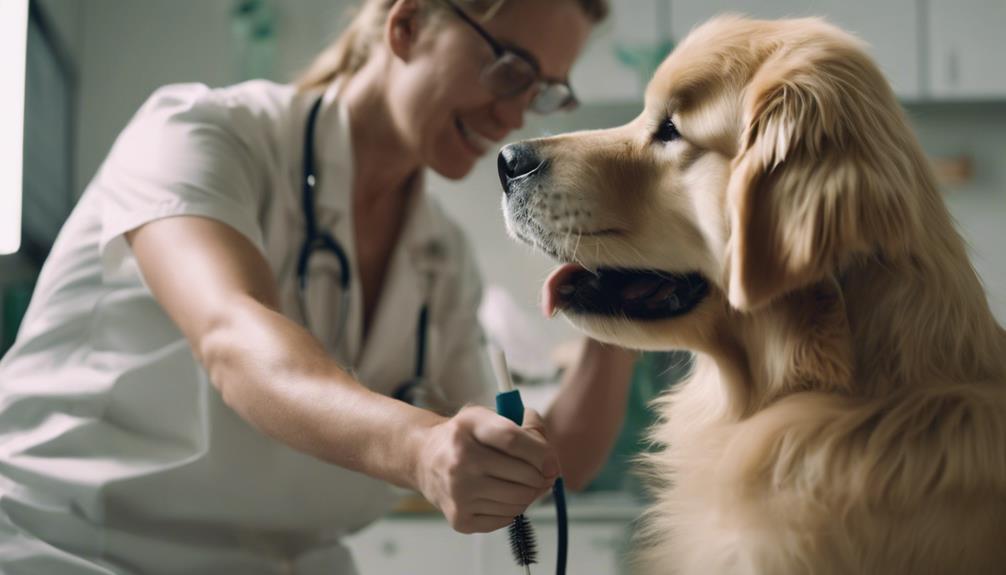
To ensure the proper care and grooming of your dog's coat, it is essential to employ effective techniques when tending to their grooming needs. When brushing your dog, it's important to use the right tools and proper techniques to keep their coat healthy and shiny. Here are some key techniques for brushing your dog:
| Technique | Description |
|---|---|
| Start from the Head | Begin brushing from the head and move towards the tail in the direction of hair growth. |
| Use Gentle Strokes | Use gentle and firm strokes to untangle any knots or mats without causing discomfort. |
| Brush the Undercoat | Pay special attention to the undercoat to prevent matting and keep the skin healthy. |
| Regular Brushing | Establish a regular brushing routine to maintain your dog's coat and overall health. |
Tips for Brushing Your Dog's Teeth
For optimal oral hygiene in dogs, incorporating a consistent dental care routine is crucial. Here are some tips for brushing your dog's teeth:
- Start Slow: Introduce your dog to the toothbrush and toothpaste gradually to avoid resistance.
- Choose the Right Tools: Use a dog-specific toothbrush and toothpaste to prevent any harmful effects.
- Brush Regularly: Aim to brush your dog's teeth at least 2-3 times a week to maintain oral health.
- Reward Good Behavior: After each brushing session, reward your dog with a treat or praise to create a positive association with teeth brushing.
Importance of Dog Dental Health
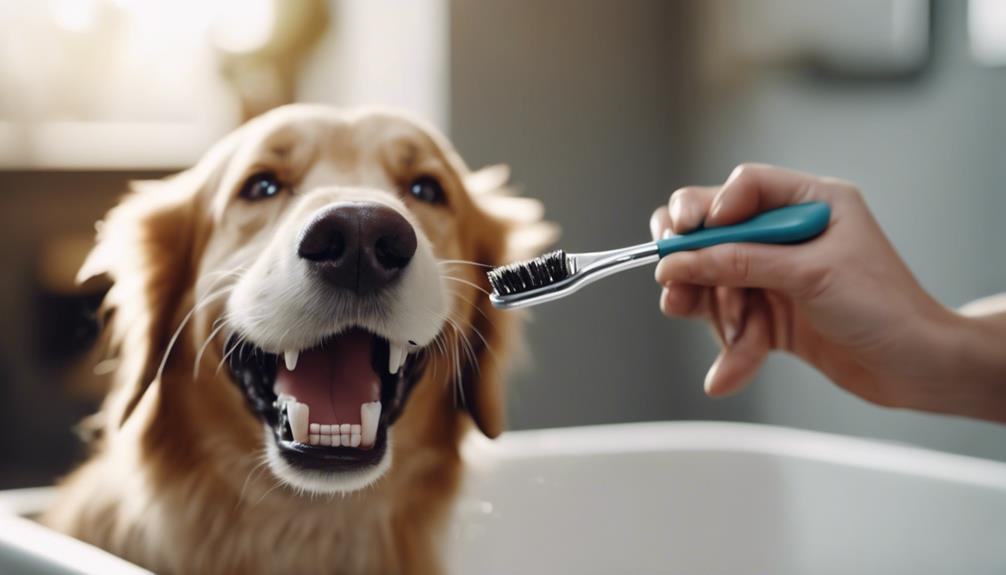
Maintaining optimal oral hygiene in dogs goes beyond brushing their teeth; understanding the importance of dog dental health is essential for their overall well-being and longevity. Neglecting dental care can lead to various health issues such as periodontal disease, tooth decay, and bad breath. Regular dental check-ups and cleanings are crucial to prevent these problems and ensure your dog's teeth and gums stay healthy.
Poor dental health not only affects the mouth but can also impact other organs such as the heart, liver, and kidneys. Implementing a dental care routine, including brushing your dog's teeth, providing dental chews, and scheduling professional cleanings, is key to promoting good oral hygiene and overall wellness in your furry companion.
Ensuring Clean and Healthy Ears
Proper ear care is essential for maintaining your dog's overall health and well-being. To ensure clean and healthy ears for your furry friend, follow these key tips:
- Regular Inspection: Check your dog's ears weekly for any signs of redness, swelling, discharge, or odor.
- Gentle Cleaning: Use a veterinarian-recommended ear cleaning solution and cotton balls to gently wipe the outer part of the ear canal.
- Avoid Q-Tips: Never insert Q-tips or other sharp objects into your dog's ear canal as it can cause injury.
- Professional Guidance: If you notice any abnormalities or are unsure about cleaning your dog's ears, consult your veterinarian for guidance and proper care.
Common Ear Cleaning Mistakes
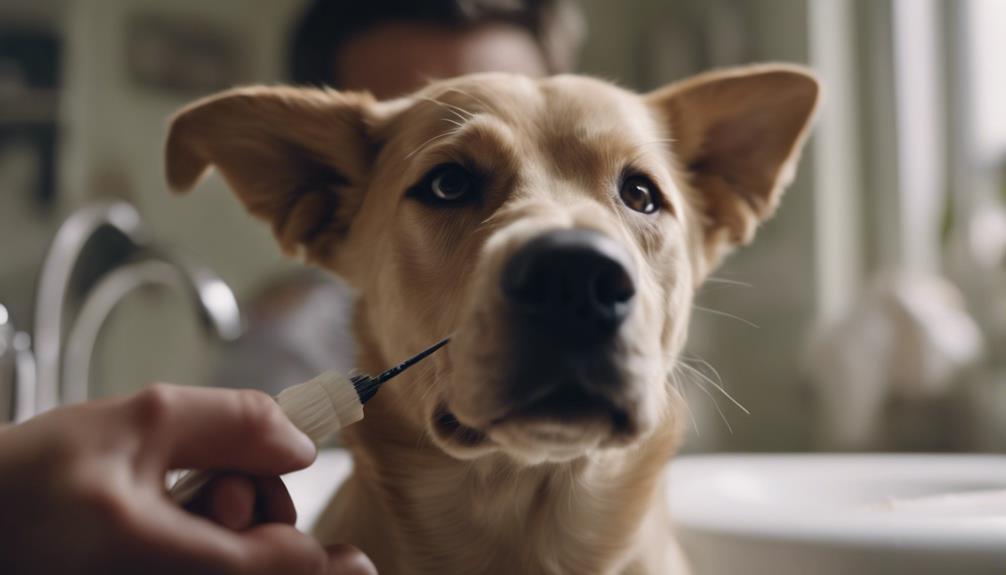
When cleaning your dog's ears, it's crucial to be aware of common mistakes that can inadvertently harm your pet's ear health. One common mistake is using improper tools for cleaning, such as cotton swabs or sharp objects, which can damage the delicate ear canal and lead to pain or infection.
Additionally, not drying your dog's ears thoroughly after cleaning can create a moist environment ideal for bacterial growth. Overcleaning is another pitfall to avoid, as it can strip the ear of essential oils and disrupt the natural balance, potentially causing irritation.
It's important to use vet-approved ear cleaning solutions and techniques, following guidelines to ensure your dog's ear hygiene is maintained without causing harm.
Maintaining Your Dog's Overall Hygiene
To ensure your dog remains healthy and clean, regular grooming practices play a vital role in maintaining their overall hygiene. Here are four essential tips to help you uphold your dog's hygiene:
- Regular Brushing: Brush your dog's coat regularly to prevent matting, remove loose fur, and distribute natural oils for a healthy coat.
- Proper Bathing: Bathe your dog with a mild dog shampoo as needed, taking care not to over-bathe, which can strip their skin of essential oils.
- Trimming Nails: Keep your dog's nails trimmed to a suitable length to prevent discomfort and potential injuries.
- Cleaning Teeth: Brush your dog's teeth regularly with a dog-friendly toothpaste to maintain oral hygiene and prevent dental issues.
Conclusion
In conclusion, proper grooming is essential for maintaining your dog's hygiene and overall well-being.
By following veterinarian Courtney Campbell's expert advice on bathing, brushing, dental care, and ear cleaning, you can ensure that your canine companion stays healthy and happy.
Remember to use the right tools, techniques, and products recommended by professionals to keep your dog looking and feeling their best.
Prioritizing your dog's grooming routine will contribute to their overall quality of life.




